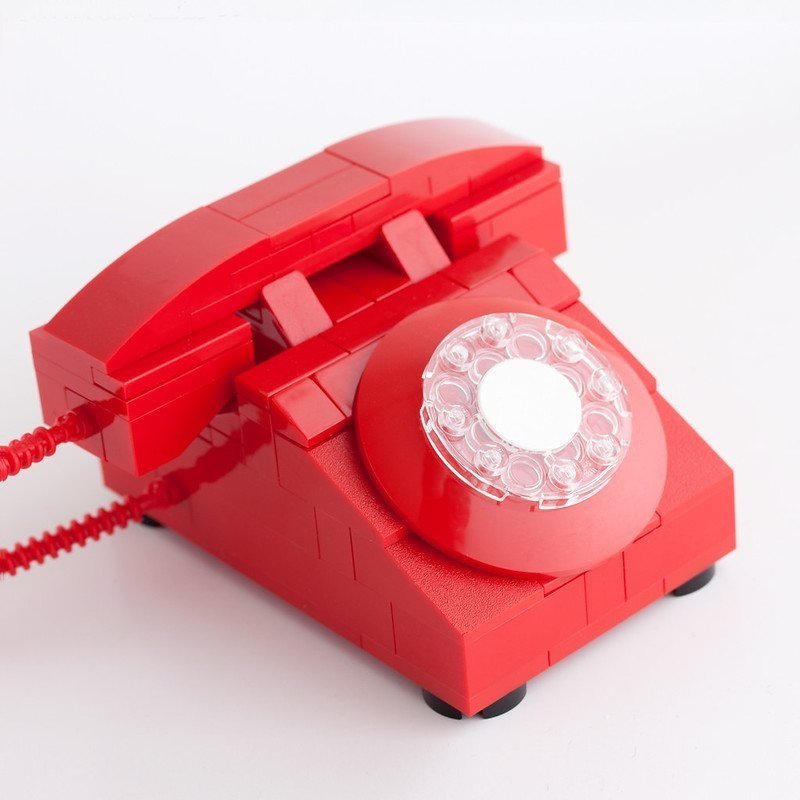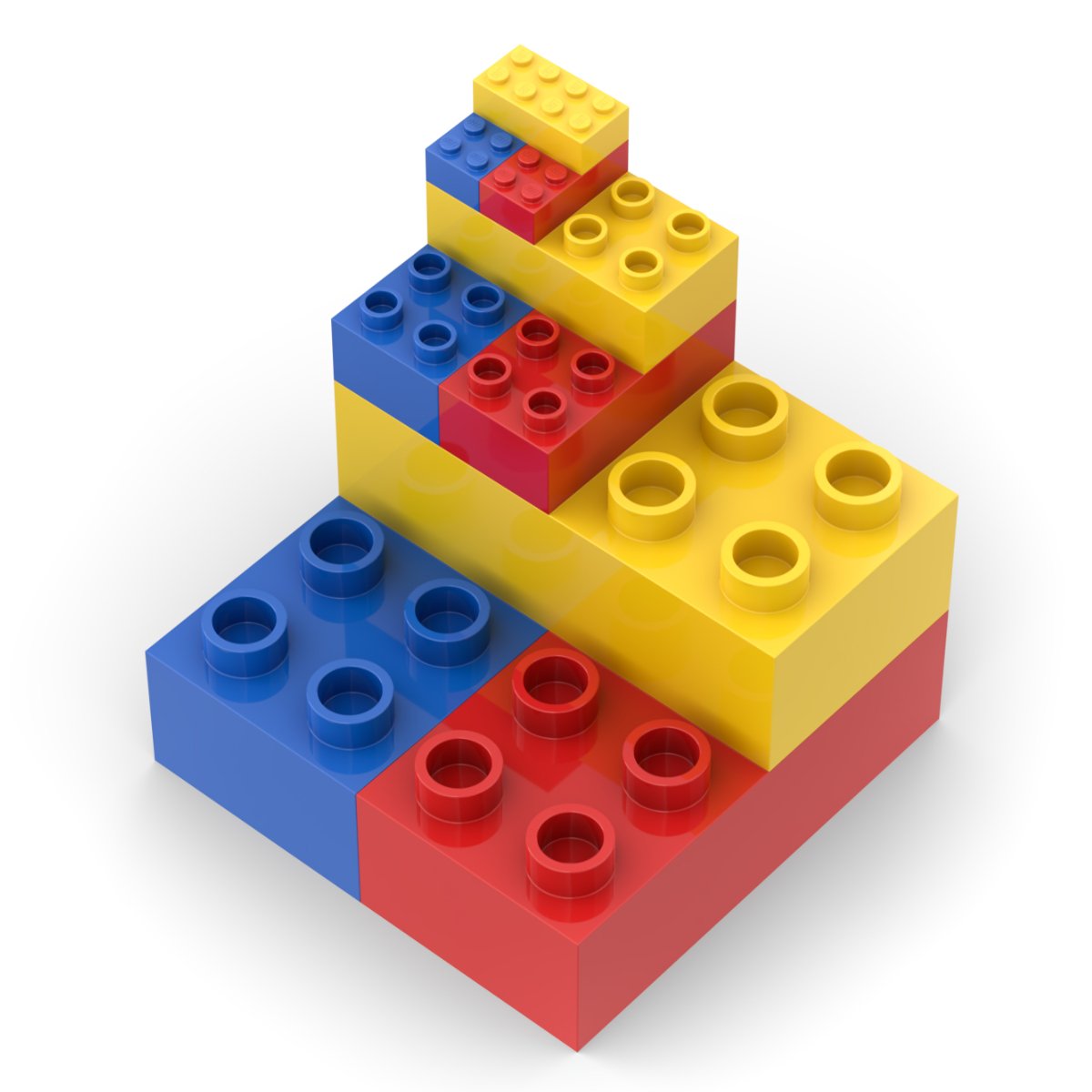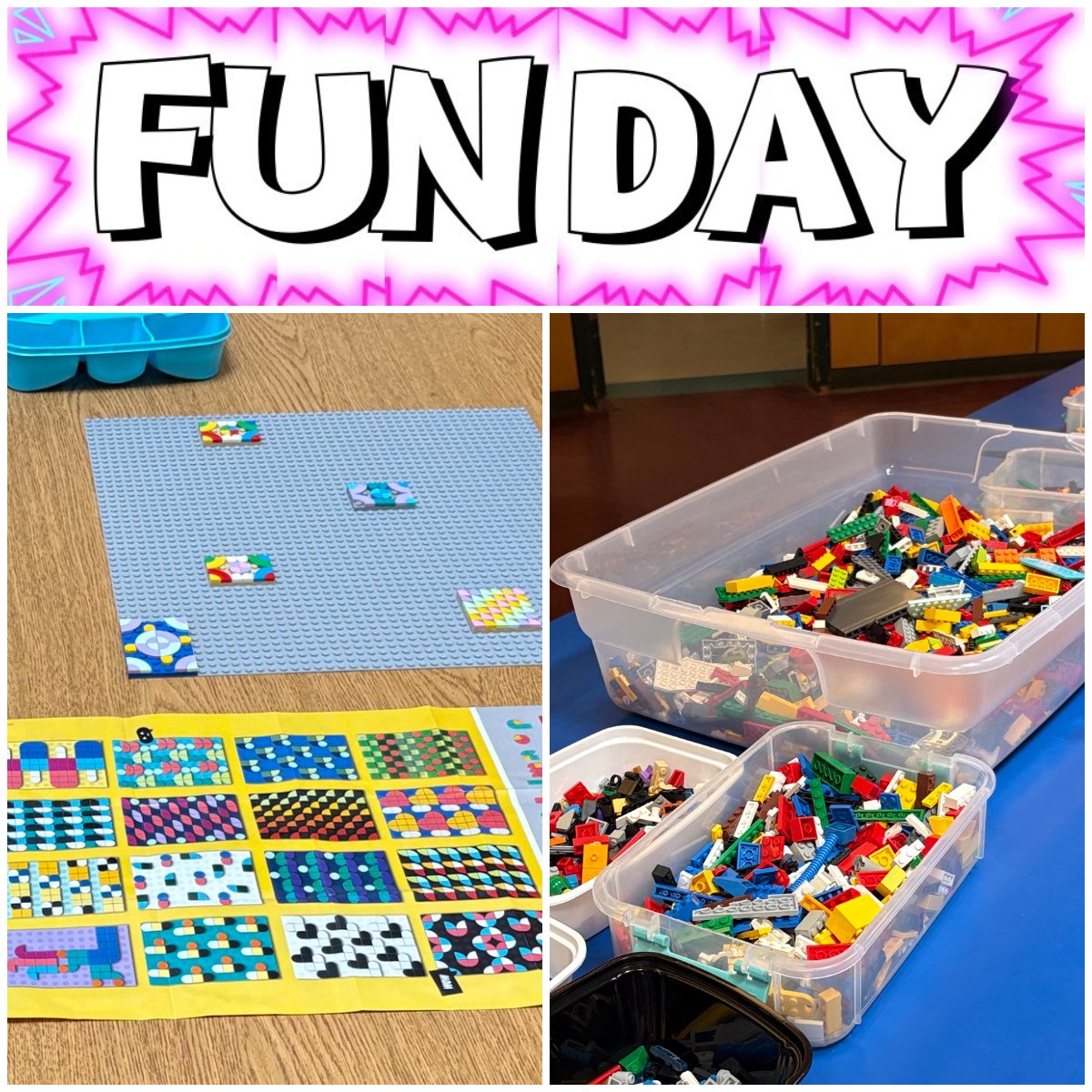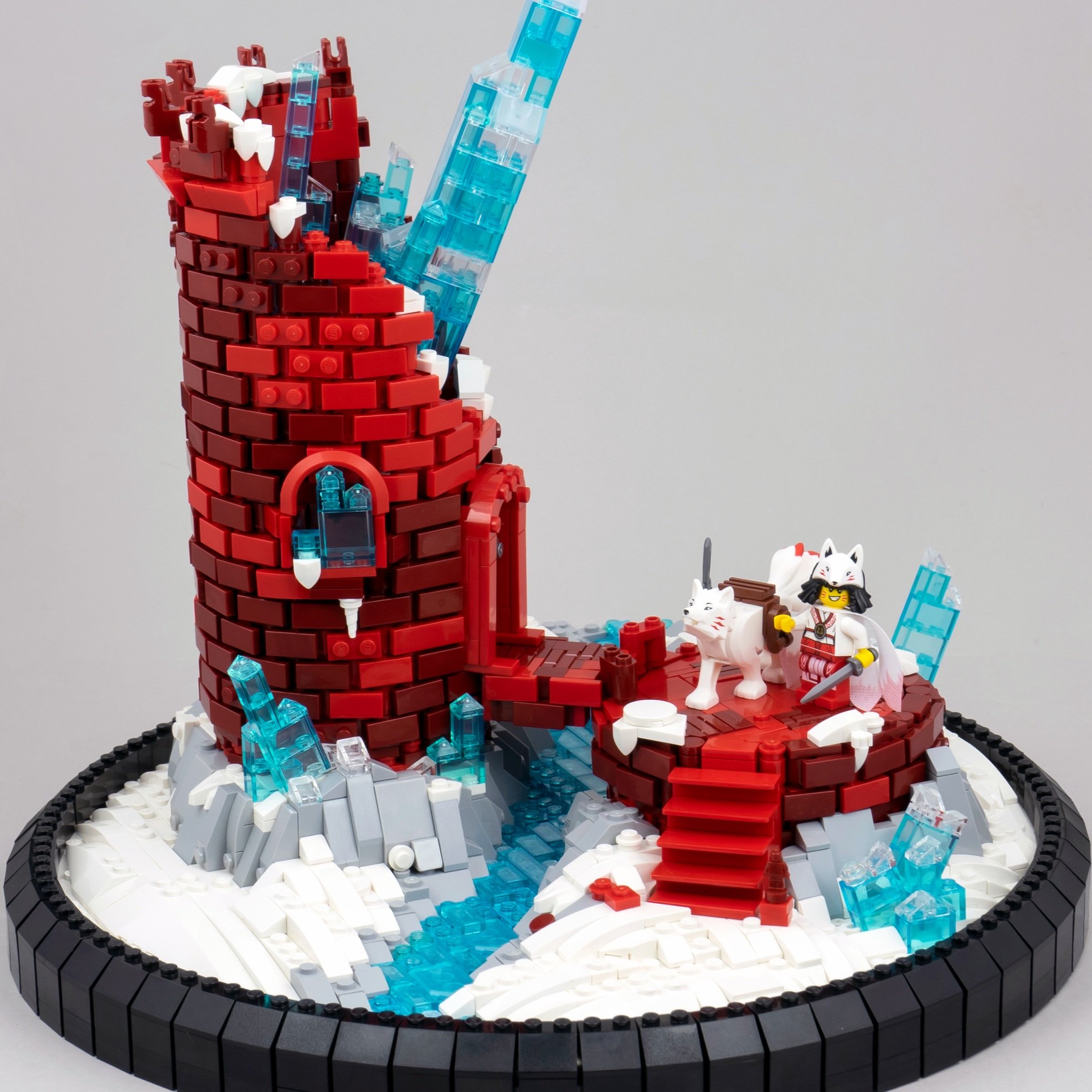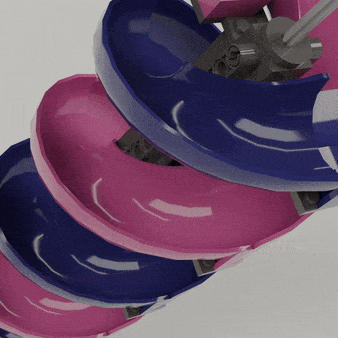How to Create a Con Kit: An Interview with BricksLA Builder Tim Heiderich
/When an AFOL thinks about a“con,” they may think of “friends” or “MOCs” or “games.” With this year’s Bricks LA virtually in the books, I wanted to focus on the nerdly little details that the Very Important Builders (VIBs) in attendance may have overlooked. This is the third year that registered BricksLA participants received custom con kits designed by Tim Heiderich. The development of these kits involves some head-of-the-class Nerd Skillz. Not just run-of-the-mill nerdity like NPU (nice parts usage). We’re talking archival research and city planning and font detail. Super-duper-uber-BrickNerd fodder! Put on your highest prescription reading glasses to learn more.
Tim Heiderich with two of his Bricksla Con kit models
GWYNETH KOZBIAL: Bricks LA has always had good swag, but it didn't always have con kits. These are exceptional little sets. How did they come to be?
TIM HEIDERICH: I had gotten the idea after attending Bricks by the Bay and discovering that other conventions had con kits--so I figured why not Bricks LA? I pitched the idea to Ayleen Dority (the Bricks LA Show Coordinator), and she was really supportive, like, "If you can bring me an idea, let's make it happen." So that was the start of it. Unlike a lot of other conventions, Bricks LA doesn't really have an annual theme, so I took Los Angeles itself as my inspiration, and since we have so many famous landmarks, there were plenty of ideas to choose from!
GK: You have chosen some… “very original” landmarks. The first set was a highway overpass! Traffic is quintessential LA, but not a traditional source of "artistic inspiration.” What led you to pick that for your first set?
TH: Thanks! I got the idea during my commute, funnily enough--traffic is such an LA thing that the overpass seemed the best way to embody it. I was a little surprised that some people I talked to from as nearby as OC didn't get it... guess it's really just an LA thing! Reading up on the four-level interchange itself, it actually has some interesting history, which you wouldn't expect from a freeway.
I chose to start with the freeway as kind of an inauspicious beginning, which was a choice inspired by the modular buildings, as a matter of fact. If you remember from the early sets, they weren't as detailed--not even any interiors! The later sets are much more detailed, but if you go back to the originals, there's still a fondness for them, so I was going for that same feeling.
TH: The stack interchange was one of a series of landmarks I designed all at once to show to not just Ayleen but to myself that this theme could work as more than just a one-off. So I ran the prototypes by her. I also asked for feedback from my AFOL friend Bruce Heller (still keeping the project under wraps), and he said, "Are you asking for feedback or just showing off?" Guess he liked them! I hadn't really made a lot of MOCs at the time and was still unsure of myself.
GK: That's some A+ positive reinforcement. What kind of MOCs had you built previously?
TH: I don't think I had built much of anything--I made an ornate brick frame for a small portrait a friend had done for me and a replica of the Apple Icon Garden, but nothing terribly involved. I hadn't really found my feet yet.
GK: The overpass is very "Architectural.” Had you built a lot of Architecture sets that informed your style?
TH: What really informed the design of the overpass was an unlikely source: the 4x4 macaroni tiles (27507) that had just come out and were still pretty pricey on BrickLink... but I found them on Bricks & Pieces for like 11¢, so I felt I just had to do something with this new part. Knowing they were easy to source without the cost getting out of control helped it all fall into place.
As you can see from not just the presentation but the booklet, yes, the design is based off the Architecture series. Same with the printed tiles. I know con kits can get a little pricey (also like the Architecture series!), so I wanted VIB's to feel like they got something of value beyond just the parts.
GK: LUGOLA Ambassador Peter Aoun also designs little models for the day Bricks LA AFOLs spend at Disneyland. Did you consult with him or his models for inspiration?
TH: I didn't consult with him directly, but his sets were the inspiration—that he can do an amazing MOC with about a dozen pieces is pretty remarkable.
GK: Your overpass model is pretty detailed with printed pieces. The con kits have a really high production value. Did your original version involve stickers?
TH: I mostly try to draw from the standard assortment of readily-available bricks, but I don't want someone to look at the con kit and see something they can build on their own with the bricks they have, hence the printed tiles. I don't know if other AFOLs are a sucker for a printed tile like me, but those printed overpass signs are a real treat—there are four of them and three are unique! You could build the con kit on your own, but you'd never have those printed tiles.
And I put a crazy amount of work into them, too—did you know there are different designs for state freeways, interstates, and highways? I looked up all these regulatory details on the DOT website just to make sure they were accurate. I even found the correct font (Highway Gothic). All for this tiny green 1x2 tile. Oh yeah, and printed tiles are expensive, but stickers weren't even considered!
GK: Are you given a price point or a piece count to meet when designing the con kits? Have you had to alter any of your original designs to meet those standards?
TH: Since the con is usually footing the bill, it's down to Ayleen to say no, but I try to be conscientious and not break the bank. Originally I had attempted a micro-scale Hollywood sign, but it was 6x24 and over 200 pieces and just way too expensive for a freebie. You want to have something inexpensive to design but still feels like you got your money's worth. Thankfully, Ayleen has been pretty generous, because I thought asking for five unique printed tiles on the first set was a big ask.
GK: You were inspired by Bricks by the Bay, but were there specific con kits you were trying to emulate, or did you go straight for "this should look like an official set?”
TH: The presentation of con kits from all over has been all over the place, which kind of irks me. Sometimes a con just provides parts and a folded page out of a laser printer in a Ziploc bag, so I was deliberately trying to emulate the LEGO design language as closely as I could just to have some 'standard' to work with. That was partly why I did a few sets all at once, so I had a standard to work with. From there, it gets into the details of making the sticker for the box and the instructions, both of which I loved doing.
GK: Do you also do everything for the instructions and graphic design of the kits?
TH: This year's graphics were done by Alex Saar who turned in some amazing designs that perfectly captured the mid-'90s LEGO City aesthetic I wanted. But before that I was doing the design of the booklet and instructions. I took pains to think through the instructions; I don't know if other designers do that, but I was paying careful attention to how instructions try to manage your attention as you build, by focusing on a specific area or group of elements.
TH: Sometimes you encounter what seems like a really trivial step, which I think is just done to balance out the page count. Because of the way printing and binding works, steps need to be in multiples of four, which may explain why sometimes there are these 'filler' steps.
I used this trick deliberately in the Hollywood Bowl set to place one black 1/4 round tile, and was so pleased when people got it: you had built the entire stage first, and then set down this one tile in the middle, and it clicks for you in context—it's a grand piano!
TH: I loved all the details of designing the rest of the instructions, getting out a ruler and measuring the margins and the font sizes in the official Architecture set instructions so I knew how to do them correctly. Another note about fonts: it was driving me crazy trying to get the font right, and I enlisted the help of a graphic designer friend of mine to solve the mystery. If you want to know the typeface LEGO uses in their instructions, it's not Helvetica, it's not Arial—it's Chalet.
GK: That is some next-level attention to detail.
TH: Oh it gets better! There are different typefaces in the Chalet family: Chalet New York for step numbers, Chalet London 1960 for titles, Chalet Book for body text...
GK: [NERD! Cough cough.] Which is Awesome! Your second build was the Hollywood Bowl (one of my favorite places in LA). It's a much more apparent choice than an overpass. It's a wonderful build, and you're right about the piano. Did you seek out models built by other AFOLs? Or did that not matter?
TH: I hadn't really sought out other designs, just landmarks that appealed to me. It is unfortunate that there are some places I love in LA that for the life of me I can't render to my satisfaction in an 8x8 square, but maybe someday. LEGO already made those skyline Architecture sets, with four or so major landmarks of different cities. I thought of doing something like that for LA, but it seemed like an impossible task to shrink down so much character into a 4x4 size building, so each set grew into its own piece.
The only other model I had seen already built was Grauman's Chinese Theater. It was part of a microscale diorama that LUGOLA had donated to the Glendale LBR (that was tragically destroyed). That was a microscale Chinese Theater that I knew I couldn't top.
Once upon a time, this monument to Los Angeles designed by the los angeles lug (lugola) graced the wall of the glendale lego brand retail store.
GK: But you're not actually limited to an 8x8 square. This year's model is a polybag! An adorable, cleverly composed brunch truck. Was a polybag always the intention, or did plans change because of COVID?
TH: Plans definitely did change because of COVID. They weren't even sure they were going to have a Bricks LA this year, but after Bricks by the Bay and BrickCon, the sentiment for an online convention seemed generally positive so plans went ahead, albeit on a smaller scale.
That meant being asked for something about 30 pieces or less. We threw around some ideas, and I felt like a polybag needed to be of something portable and self-contained (for whatever reason). Still sticking with the theme of quintessential LA, the food truck seemed absolutely perfect. So I came up with a design and went back to Ayleen like, "How about a 47-piece set?"
GK: So was the food truck not part of your initial trove of potential submissions?
TH: Oh no! I had to think of that last-minute. This year's set was supposed to be... well, you'll find out next year! It was serendipitous that the food truck idea meshed with the Brick Brunch meetup idea that Ayleen already had, so it becomes this promotional item as well. (Plus, there are the printed tiles!)
Because this was a polybag, this also meant a different approach to instructions. So I tried copying the design of true LEGO polybag instructions as closely as possible for the same experience you would get with an official set.
The Z-fold is actually printed upside down, so it opens like an accordion, and then it's folded in half with just the graphic on the front which makes the presentation absolutely perfect and intuitive to me. The upside-down thing was a huge pain because as I'm trying to imagine the paper folding upside-down and then flipping it over, I was still trying to remember which way is up! Ayleen, John Langrish, and I spent a lot of time making sure we got it right because it's so counterintuitive to produce.
GK: The instructions are really spot on. Did you open a lot of polybags to consult for this?
TH: I did use a few different polybags as reference. It's funny because this trains you to look at instructions with a really critical eye... and then you find all these weird design choices LEGO makes that you never saw before. For example, one thing I never noticed is how much negative space there is, for one, or how one theme will have one design grammar and another theme will have a different one. Ultimately, the lesson I took away from this is that there is no one 'right' way to do instructions, other than "does it look right?" If it looks right--it’s right!
GK: This doesn’t seem like the type of thing less-nerdly builders pay attention to. Have you had any feedback from the LEGO community? Or from designers of other con kits?
TH: I was thrilled when Bruce Lowell gave a positive review to the Hollywood Bowl set on his Instagram, and Bricks LA's LEGO contact Jan Beyer was similarly impressed with it—so if I can impress someone at LEGO, I must have done something right!
GK: You definitely have. You put a lot of work into these sets with a limited run. (And it's clear now why they look so darn good.) Do you get extra copies of the sets (or at least the printed tiles)?
TH: I do get extra copies of the sets. I'm a cheap date. Maybe they'll even be worth something someday!
A moc monument to that time lego dimensions were 99c only.
GK: Have you noticed any ways in which your work on the con kits has influenced your other MOCs? Have your original con kit ideas that you didn't use straight away evolved over time as you became a better builder? Will what we see in one year be vastly different than the original concept?
TH: They're a little different in their design because unlike a MOC where you may only need one of a certain part, you need to make sure you can get 200+ of a certain part to make kits. Now being able to source parts from LUGBULK really changes things, but there's still the balance of whether I'm designing with the parts I can get in mind first, or if I'm finding parts that support the design I originally planned.
And the designs do change, though maybe only slightly. Thankfully, by starting well in advance, I have time to work over little details I'm still not completely sold on. And new parts and colors come out every year and suddenly there's a better technique I can use.
One thing that changed when we got access to new bricks was the backdrop to the Hollywood Bowl—I swapped out some 2x2 curved slopes and discovered one section of the shell slid out, meaning now you could swap out the color of the stage backdrop, so we got two different design choices: the normal backdrop and a rainbow backdrop inspired by a show at the bowl by The Muppets.
GK: That piece makes the set for me. What a happy accident!
TH: I think there are different approaches to MOCs. Overall, I tend to design mine more as toys than art or sculpture because I still like LEGO as a toy—which is why I try and incorporate play elements into my builds, whether it's a build that tells a story or has a light-up element or some other surprise.
One thing that applies to both MOCs and con kits is that I want them to look good from all sides, so if you're looking at, say, the freeway set from the side or the back, you still see something different that isn't just an afterthought. Same with my MOC of the “99¢ Only Store” or “the outback scene.” There are details from all sides.
tim builds his mocs with details to be observed from every angle. this is a scene from the australian outback
GK: Your instructions also have added information about the landmarks in them. Is that your doing as well?
TH: One of the things I really got into with the instructions was writing up a little bit of history on the location to go with it. It was so much fun to jump down that rabbit hole, of finding old playbills and photos on archive.org, or just reading about the history of the people behind this landmark. It's a great opportunity to inform people about the history of these places, since they may not get a chance to learn about them. If I can highlight the four or five most interesting things about these landmarks, then hopefully it helps to connect people to their city.
GK: Final speed round, would you build sets for a different LEGO fan convention, or is your heart in Los Angeles? Would you want to see your con kits displayed in any local relevant museums? If you could put anything you’ve built on display anywhere, which one and where?
TH: My heart will always be in LA, but I would like to try and design a con kit based around another theme just to see if I could do something different. As for display, I hadn't thought of anything like that. I think these sets are perfect on a desk, just as a reminder of what an iconic city we live in. And who knows, after the full set of landmarks are out, maybe someone would see fit to display them at the LEGO House.
What landmarks would you like seen made into a LEGO fan convention custom kit? What other con kits do you recall fondly? Leave your thoughts in the comments below.













